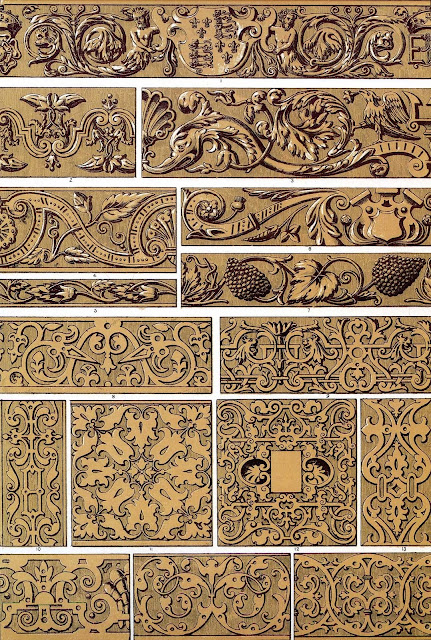 A cigarette had been tossed into the bin creating a fire. Look out behind you.
A cigarette had been tossed into the bin creating a fire. Look out behind you.
Saturday, January 30, 2010
Bright Shiny Day Snowshoe Hike
Let's just say it was breathtaking....far too awesome for words.
(Not sure if you are on an email subscription if the video shows up, but you can click over to my blog and view a 30 second video of the landscape.)
It was so quiet and we had the whole place to ourselves. This is the best kind of hike...time to enjoy the quiet and the beauty. Look at those cattails. It reminds me that in the summer this place is hopping with red-winged blackbirds and egrets. This day we saw nuthatches, mountain chickadees, and a raven. It was surprisingly quiet.
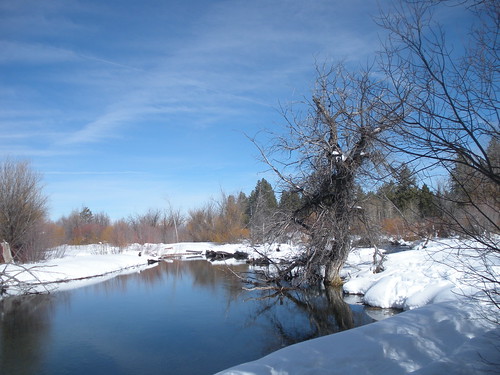
The beavers have actually dammed up the regular waterway and it is now flowing around the right side instead of straight through. Fascinating.

Some of the creek is actually all covered over with snow...you can see openings where the water is frozen over. As many years as we have been coming here in the winter, we have never seen this before.
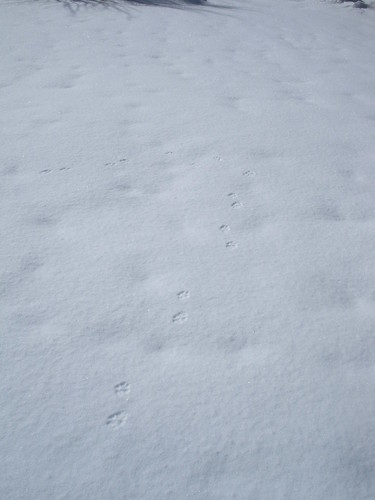
Not very many tracks in the snow this time...
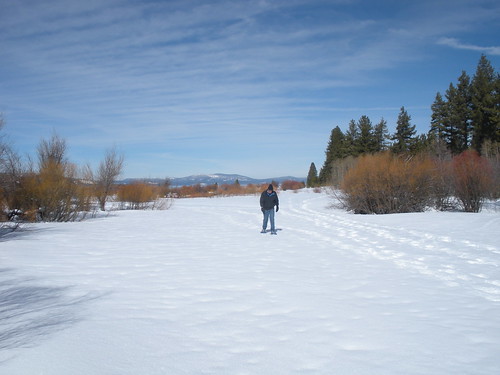
As usual, we end up spreading out and just taking the trail at our own pace. We are usually all within eyesight of each other but keeping a nice distance in between.
As much as I hate to miss a day of regular schoolwork, we really needed this day to wander out in the sunshine and fresh air.
Images That Changed the World
 Over the last week, BBC Radio 4 have broadcast Images That Changed the World, a series in which Dr Mark Lythgoe explored the development of medical imaging techniques and their wider cultural influences.
Over the last week, BBC Radio 4 have broadcast Images That Changed the World, a series in which Dr Mark Lythgoe explored the development of medical imaging techniques and their wider cultural influences.The five episodes explored X-Rays, Brain Scanning, Ultrasound, Microscopy and the Double Helix, and featured contributions from scientists, authors and historians.
 Friday's episode included commentary from Helen Wakely, Archivist, Wellcome Library on the images shown here: two early sketches of the DNA Double Helix, from the papers of Francis Crick held by the Wellcome.
Friday's episode included commentary from Helen Wakely, Archivist, Wellcome Library on the images shown here: two early sketches of the DNA Double Helix, from the papers of Francis Crick held by the Wellcome.All the episodes are still available to listen to in the UK through the BBC's iPlayer, and Dr Lythgoe can also be heard discussing the discovery and impact of X-Rays in this BBC audio slideshow.
Friday, January 29, 2010
Smile Shines Through
 More from my archives. I'm travelling over the next week so posting may be a little erratic. You may even get a postcard or two. Travelling with a cold can challenge one's humour.
More from my archives. I'm travelling over the next week so posting may be a little erratic. You may even get a postcard or two. Travelling with a cold can challenge one's humour. I like this image for that reason. (From the Lord Mayor's Parade.) A bitterly cold and wet day. The sailors smile just beams through. Makes my cold seem rather trivial.
Owen Jones and Elizabethan Ornament
Further reading links:
The Grammar of Ornament: All 100 Color Plates from the Folio Edition of the Great Victorian Sourcebook of Historic Design (Dover Pictorial Archive Series)
Grammar of Ornament: A Monumental Work of Art
Art and Decoration in Elizabethan and Jacobean England: The Influence of Continental Prints, 1558-1625 (Paul Mellon Centre for Studies in Britis)
Elizabethan & Jacobean Style
Art and Decoration in Elizabethan and Jacobean England: The Influence of Continental Prints, 1558-1625.(Review): An article from: Renaissance Quarterly
English homes of the early renaissance;: Elizabethan and Jacobean houses and gardens
An Elizabethan Inheritance: The Hardwick Hall Textiles
Fragments and details of architecture, decoration, and furniture of the Elizabethan period: 92 plates selected from "Studies from old English mansions."
Elizabethan interiors
Materializing Space at an Early Modern Prodigy House: The Cecils at Theobalds, 1564-1607
Art and Decoration in Elizabethan and Jacobean England: The Influence
Sir James Watt 1914-2009

His obituary in the Times (London) sets out his career and his vast range of interests, though not his stewardship of the Medical Society of London, which was described in a further note by Dr Roy Davies. It was during Sir James's presidency of the Society that historic books from the Medical Society of London library were made available for purchase for the Wellcome Library, with support from the Friends of the National Libraries and other well-wishers.
Sir James Watt was much in demand as a lecturer in every continent, and used to order masses of slides from the Wellcome Library for the purpose. At one point in the 1980s Kodak changed their slide carousels in the USA and Canada to ones with slots for thin mounts (more slides could be fitted in that way), but continued to sell carousels with thick slots in the UK. Sir James arrived for a lecture tour in the USA with hundreds of slides prepared by the Wellcome Library, only to find in the first run-through that they would not fit in the only available thin-slot carousels.

He went out and bought some thin mounts and, using his surgical skills and stamina, spent most of the night remounting the slides. Someone who attended the lecture the following day said afterwards what an impressive performance it had been, with no idea of what the lecturer had had to go through to carry it off successfully.
Portrait of Sir James Watt from obituary by Alan Green and Tim Williams published by the Travelling Surgical Society of Great Britain and Northern Ireland. Slide carousel by rosefirerising
Outdoor Hour Challenge: Winter Series #4 Winter Weather
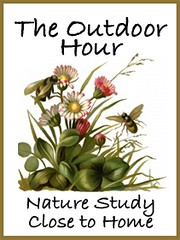 Outdoor Hour Challenge
Outdoor Hour Challenge Winter Series #4
Winter Weather
Winter weather is usually pretty interesting to children. Observing snow, ice, rain, fog, hail, or just feeling the cooler air is enough to get them interested in going outdoors for this week’s nature study challenge.
I have a vivid memory from my childhood of taking a walk in a raging downpour. I challenge you to experience your weather outdoors at least for a few minutes this week. Properly dressed, your children might just make a fond memory of their own.
"There is no reason why the child's winter walk should not be as fertile in observations as the poet's; indeed, in one way, it is possible to see the more in winter, because the things to be seen do not crowd each other out."
Charlotte Mason, Volume 1, page 86
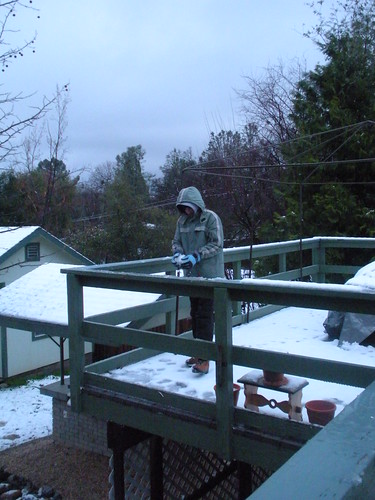
Inside Preparation Work:
You can read the section in the Handbook of Nature Study on water forms to arm yourself with some basic weather information. Pages 808 to 814 have lots of fun ideas for learning about different aspects of our winter weather.
Optional Inside Preparation Work:
More ideas for winter weather study are found in chapter two of Discover Nature in Winter. There are so many great ideas for studying snow in this chapter that you will find at least two or three that you would like to try with your family. Use your highlighter or sticky notes to mark the places that you find with interesting information or ideas for including in your winter nature study.
Check out the Winter Wednesday entry from last year to glean some ideas for your Winter Weather study: Winter Snow
Outdoor Hour Time:
This week you can use your time to enjoy the winter weather in your backyard. If you have chosen some weather related activities to complete outdoors, make sure you bring any items you need for your study. You may wish to bring along your weather notebook page or your nature journal with pencils to take a few minutes of your outdoor time to record the weather conditions. If your children are enjoying their time outdoors, you probably want to wait until you go back inside to talk about the weather.
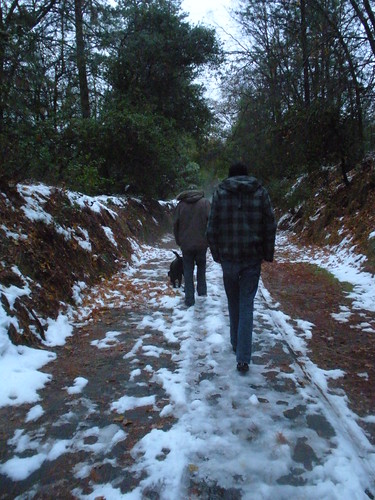
Follow-Up Activity:
Be sure to complete your Seasonal Weather notebook page from the sidebar of my blog or the Winter Nature Study notebook pages (see link below). You could talk about the differences between what you observed in autumn and those things you recorded this time.
How is the scene you drew this week different from the autumn scene?
How are the temperatures different?
Is there a difference in the number of hours of daylight?
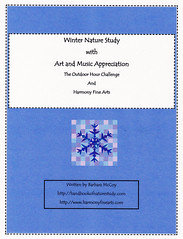
If you would like all the Winter Series Challenges in one book, I have an ebook gathered for you to purchase for your convenience. The ebook also contains art and music appreciation plans for the winter months as well. Please see this entry for more details:
Winter Nature Study Ebook Now for Sale. You can also purchase just a set of custom notebook page for the Winter Series Challenges by following the link above.
My daughter also has a complete Weather Lapbook Kit for sale on her blog, Hearts and Trees, for $2.95. Pop over there and check that out if you would like to spend a little more time on weather as part of your nature study. She also has a Clouds in Art Mini Unit with custom notebooking pages for $4.95. This is a fantastic art study with a weather theme. I highly recommend both these products as a supplement to your nature study. Sidenote: Amanda is getting ready to release her latest kit any day now....stay tuned for more details!
Make sure to come back and enter your blog entry for this challenge in Mr. Linky.
Barb-Harmony Art Mom
Behind the Scenes: Digital Services
 This is the first in a series of posts aimed at revealing the cogs and wheels that make up the Wellcome Library. These are the departments and teams that provide the services our readers are so familiar with.
This is the first in a series of posts aimed at revealing the cogs and wheels that make up the Wellcome Library. These are the departments and teams that provide the services our readers are so familiar with.Now, we find ourselves on the first floor of the Wellcome Collection building with Digital Services. This department brings together several roles and resources in the Library centred around the technical delivery of websites, catalogues, digitisation projects, digital imaging services, an open access repository for research outputs, and digital curation.
The Imaging Department will be the focus of a future blog post. Here, we concentrate on the rest of Digital Services. There are 9 members of staff (outside Photography) who work in the following areas:
Systems support services (LSS). This team works to keep the Library catalogues and website in top condition to serve the high expectations of the Library users. As well as leading a programme of projects to upgrade and streamline services, the team helps manage access to electronic resources, including databases, electronic journals and digital collections. In addition LSS provide first line support for all IT systems and services used throughout the Library both by Library users and staff.
Open Access: Digital Services is also responsible for taking forward the Trust's open access policy. Specifically, this takes the form of managing the contract to run UK PubMed Central (the UK's largest free online life sciences resource), working with publishers to help them develop policies that comply with the Trust's OA mandate, and planning the ongoing development of the UKPMC service. With regard to this latter activity, plans are afoot to expand this resource into a single, Europe-wide, open access repository for lifesciences research.
Digitisation Projects: The Digitisation Project Manager oversees the Library's Digitisation Program, working with two Content and Metadata Officers to aid the Library in the development of digitisation projects, digital storage and delivery of digital content. The department is currently involved in developing a large scale digitisation program that will see the digitisation of much larger collections of material around a series of strategic themes. The first of these is "Modern Genetics and its Foundations;" under this theme half a million page images of archival collections will be digitised over the next 2 years.
Digital Curation: The Wellcome Library accepts born digital archival material as part of its collecting strategy. Digital Curation is the long term management of all the Library's digital assets, ensuring that they remain viable, authentic and available to users of the Library. Responsibility for managing the Library's Digital Asset Management system is divided between the Library Systems Administrator and the Digital Curator.
The biggest challenge for the department is determining how to deliver on The Library's ambition to provide online access to a large number of digitised collections, including books, archival material, artworks and audio visual materials.
Understanding the components of a digital library system that can bring together both the physical collections and the digitised content in a flexible, engaging, and powerful way is no small feat. A Feasibility Study is underway to model this system, and create a proof-of-concept to test ideas around how catalogues, page-turners, storage layers and full-text indexing - for example - will interoperate.
Thursday, January 28, 2010
Friends
 William Eggleston and Charlotte Rampling for Marc Jacobs. Photo Juergen Teller
William Eggleston and Charlotte Rampling for Marc Jacobs. Photo Juergen Teller
It's always fun to hear what one photographer thinks about another, and rare when the affection is as palpable as that between Juergen Teller and William Eggleston. From the current British VOGUE, Teller writes amusingly and articulately about their friendship:
I first encountered William Eggleston’s photographs in my early twenties. I was very intrigued, and I liked them immediately, but I wasn’t quite sure what they were all about. Still, they sucked me in and stayed with me. Then, six years ago, an American magazine asked me if I wanted to photograph him. I didn’t think twice about saying yes, because, by then, he’d become a real master to me. I sent my books to him before heading to Memphis (where he lives), so he could see I wasn’t just another idiot coming to shoot him.
William’s son Winston picked me up from my hotel and drove me to the Eggleston Artistic Trust building. But William was nowhere to be seen. We were in the archive room for ages before I asked him, “Where’s your dad?” I went outside for a cigarette and William was sitting on the steps up to the archive room, a glass of water by his side, chain-smoking. We greeted each other and sat there smoking for about an hour. Then, nervously, I said, “This is perfect. Let’s do the picture here. Don’t move.” He nodded and I began. I think he liked me from the start, and he invited me to his house that evening. William’s a keen musician and he played Bach on the piano until 4am.
I was due to fly out the next day, but William didn’t want me to leave. He even came in the taxi with me to the airport. “Juergen,” he said, “do you want to go on a road trip in Bavaria?” What could I say? “Of course!” I didn’t think it was going to happen; we were so drunk.
Three weeks later, I flew to Bavaria to meet him. It was three days of total madness. We brought our cameras, but neither of us took a single photograph. We found a hotel where, again, there was a piano, and we stayed up until 3am every morning, playing music, talking, doing nothing really. William is good at just being; that’s something I learnt from him.
Not long after that, I was talking to Marc Jacobs about who we were going to use as a model for his menswear campaign that year. I suggested William. It’s well known he’s a very stylish man, and I knew Marc loved his photography. Still, it took me two days to build up the courage to ask William. “Juergen,” he replied, “I’d do anything for you. When are we going to do it?”
William had been photographing Paris intermittently over the past three years, and he had seen Louis XV (the book I’d worked on with Charlotte Rampling, shot in the Hôtel de Crillon). We shot the Marc Jacobs campaign in the same hotel room. It took hours to get William dressed; it was 10.30pm before he was ready. Suddenly, he said, “I want to meet Charlotte Rampling. Maybe we could do Louis XVI?” I sighed, but called her anyway. “Do you recall me telling you about William Eggleston? He wants you to come over and have a drink.” She replied, “Give me half an hour.”
When Charlotte arrived, William became shy, like a little mouse in the corner. I wanted them both in the pictures, so they ended up – dressed – in bed together. They got on so well, I started to feel a bit jealous – that’s William’s power. He’s unbelievably charismatic and can charm people to do whatever he wants.
The following day, we were sitting on a bench under the Eiffel Tower. We had the same model of camera, with the same lens, slung around our necks. I glanced behind me and saw an orange recycling bag with a red Coca-Cola can in the bottom. “Look,” I said, “that’s an Eggleston picture.” “Sure is,” said William, and we both turned to take the picture. He took one snap, I took five shots – all the time thinking, “I’m going to have an Eggleston picture!” Of course, mine didn’t work, but William’s ended up on the wall of his show at the Fondation Cartier.
He has a different way of seeing, of looking – it’s completely unforced. And he never gives a damn whether a picture comes out or not. I’ve never met a freer man; the sense of freedom he has in his every thought, decision and movement is extraordinary. His images give me hope; they capture the comedy and tragedy of life. He could never do what I do, I could never do what he does, but we respect each other’s work. As he once said to me, “Juergen, we have some things in common: smoking, drinking, and women. Photography just gets us out of the house.”
 Juergen Teller and his son Ed.
Juergen Teller and his son Ed.
Pima Basketry
Further reading links:
Medicineman Gallery
East West Basketry
Gila River Indian Community
Salt River Pima-Maricopa Indian Community
Indian Basket Weaving: How to Weave Pomo, Yurok, Pima, and Navajo Baskets
The Pima and His Basket
Basketry of the Papago and Pima Indians (A Rio Grande Classic, 86)
AKIMEL O'ODHAM
The Tohono O'odham and Pimeria Alta (Images of America: Arizona)
Neither Wolf Nor Dog: American Indians, Environment, and Agrarian Change
Big Sycamore Stands Alone: The Western Apaches, Aravaipa, and the Struggle for Place (New Directions in Native American Studies)
Cultures of Habitat: On Nature, Culture, and Story
The Desert Southwest: Four Thousand Years of Life and Art
Indian Basketry Artists of the Southwest: Deep Roots, New Growth (Contemporary Indian Artists)
A History of the Southwest: The Land and Its People
Winter Series #3 - Winter Sky
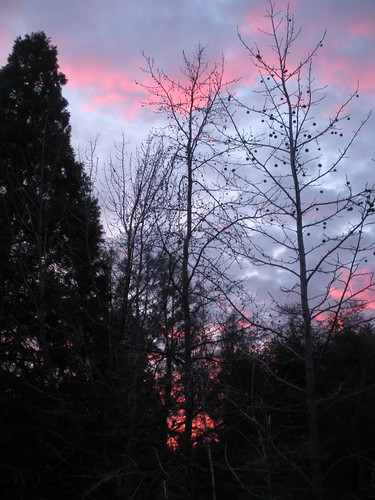
We have had nothing but cloudy, rainy, snowy weather since this challenge was posted. There has been no opportunity for much stargazing or moon watching. But, my son noticed this beautiful sunset a few weeks ago and we both had a grand time taking photos of the ever changing light and color.
He took just as many photos as I did I am sure of it. We both remarked that you really need to be watchful for opportunities like this one because they don't happen every day.

What a wonderful way to marvel at the gifts we have in the every day if we are open to seeing them.
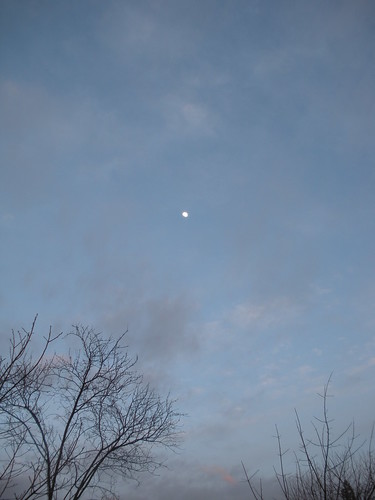
Here is a moon shot we have from a few days ago at sunset. We have some clear weather in the forecast so we hope to get out past sunset and work on our constellations.
We are prepared.
Barb-Harmony Art Mom


Hollywood might have made more classical musicals were it not for the fact that people can’t sing and dance in them. There’s little opportunity for movement beyond hands gliding along keyboards or pushing bows over fiddle strings. Those who study or perform great music tend to dismiss what few movies explored the topic. My Music Appreciation teacher at college said A Song To Remember was rubbish. Thirty years past seeing it, she laughed over Cornel Wilde as Frederic Chopin coughing up blood on piano ivories, even as that 1945 Columbia release inspired a public to cough up unprecedented cash for records and sheet music by the long-dead composer. I’ve been a hound for Chopin since first playing him with 8mm silents. People who dedicate lives to study of classical music always seemed to me an enviable lot. Given the option, I’d enjoy my next incarnation as a four-year old keyboard prodigy. Can anyone be so focused as a serious musician? Much is appealing about a life spent in single-minded pursuit of one thing (OK, so I guess I've achieved that watching old movies). MGM’s Rhapsody addresses the grand obsession even as it otherwise hews to formula romance lines demanded by Elizabeth Taylor’s then-following. Nobody much remembers this 1954 star vehicle, but it’s one I admire for affording a glimpse into music mavens and cloistered worlds they live in. Metro walked a tight rope as not to alienate general audiences who might think Rhapsody was for longhairs only. Tips for exhibitors cautioned: While the so-called serious music values of "Rhapsody" are not emphasized, it is also important to indicate that the picture has beautiful musical content. The safest route for movie usage of classical music was always a romantic one, thus preponderance of Rachmaninoff, Mendelssohn, Debussy, and others off a general listener’s short list. Pop tunes were often adapted from composers whose music struck bobby-soxer chords. And what was movie scoring then but slight updating on ideas the masters utilized years before?



Imagine An American In Paris with Rachmaninoff’s Concerto # 2 for Piano and Orchestra in C Minor for the extended finish instead of Gershwin. Rhapsody constructs its drama around a third-act performance of that by John Erickson’s character. We don’t know if he will finish thanks to emotional trauma inflicted by willful Liz. Those ten minutes the concert lasts are pitched to viewers enraptured by the music as well as ones more invested in the love match. We can dismiss Rhapsody as empty gloss after a Metro fashion, but here they tried at least to put classical works before a mass public, and make better-known the names of performers unfamiliar outside music realms. Claudio Arrau was the pianist who stood in for John Erickson. He and violinist Michael Rabin (age seventeen at the time) got considerable publicity during 1954 national tours thanks to having supplied tracks for the film, even if Arrau sniffed later of his Rhapsody appearance that one endures such moments to survive (he also stated, perhaps correctly, that Rachmaninoff is for the movies). MGM tied in with The National Federation of Music Clubs of Providence, RI (it’s still there) to get word of Rhapsody out to chapters. The organization was particularly impressed by Metro’s sympathetic treatment of "musical artists." (… it treats these artists not as freaks but as human beings). Had the image of classical adherents come to this? If so, then Rhapsody would do a lot to alleviate it. Conservatory students the film portrays are, to a man (and woman), both attractive and neatly turned in dress and deportment. Vittorio Gassman is a dashing rake perhaps far removed from real-life violinists, while John Erickson aspires to concert piano after having been a WWII commando (!). Whatever serious musicians thought of Rhapsody’s fantasy excesses, they must surely have been pleased for its having rehabilitated oddball impressions of their membership.


Paramount initially developed Rhapsody. It was ready to shoot when they sold the package to Metro. The sale represents the first application of the former studio’s recently announced policy against filming any story that it cannot cast properly or make at a cost deemed to be reasonable on the basis of anticipated boxoffice receipts, said The New York Times. Certainly Paramount was tightening expenditure in late 1952 when their sale took place. A look at that company's output finds little done on a large scale outside of DeMille projects. MGM economized too. Whatever European flavor Rhapsody needed (it took place there) would be supplied by second unit footage director Charles Vidor shot in Switzerland with co-star Vittorio Gassman. Remaining principals never left Culver City. Rhapsody was finished at a negative cost of $1.9 million, more than Paramount would spend on its releases that year minus a very few. Elizabeth Taylor’s films had been mostly profitable, these being smaller pictures starring her or big ones where she supported veteran names. Metro demurred as to hard selling Taylor as a sex symbol, at least for the present. They still had Ava Gardner and Lana Turner for that. Taylor’s beauty was of a sort left to critics to discover for themselves, with most willing to overlook her thespic shortcomings. Bosley Crowther was elevated upon wings of praise in his New York Times review of Rhapsody. Calling it a high-minded film … all wrapped up in music on the starry-eyed classical plane (was he catering to lowbrow readers here?), Crowther really wound up on his infatuee’s behalf. Her wind-blown black hair frames her features like an ebony aureole, and her large eyes and red lips glisten warmly in the close-ups on the softly lighted screen. This was twilight upon an era when critics could still unburden themselves of longings a screen goddess inspired. Variety would be less fawning, however (… it is the type of tear-and-torment drama that has little appeal for the younger set or the male ticket buyer). Selling problems the trade paper predicted saw confirmation in domestic rentals of $1.2 million, far less than was needed to cover MGM’s investment. Thanks to Euro-setting and celebration of its music, however, Rhapsody took a lively $2.4 million in foreign rentals and managed an overall profit of $124,000. The film continued getting theatrical dates up to its syndicated television release in October 1968. For instance, during a period between 9-1-62 and 8-31-67, there were 68 bookings with an average rental rate of $42 flat for a total of $2,826. Not difficult to understand why companies like MGM saw greater revenue potential in TV for their vault titles. Warner’s Archive has lately released a DVD of Rhapsody that is happily presented in the original 1.85 widescreen.
